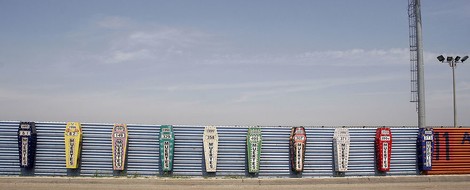Your podcast discovery platform
Curious minds select the most fascinating podcasts from around the world. Discover hand-piqd audio recommendations on your favorite topics.

piqer for: piqd Boom and bust Climate and Environment Global finds Globalization and politics Health and Sanity Technology and society Doing Good Deep Dives
Malia Politzer is the executive editor of piqd.com, and an award-winning long-form journalist based out of Spain. She specializes in reporting on migration, international development, human rights issues and investigative reporting.
Originally from California, she's lived in China, Spain, Mexico and India, and reported from various countries in Africa, Europe and the Middle East. Her primary beats relate to immigration, economics and international development. She has published articles in Huffington Post Highline, The Economist, The Wall Street Journal, Vogue India, Mint, Far Eastern Economic Review, Foreign Policy, Reason Magazine, and the Phoenix New Times. She is also a regular contributor to Devex.
Her Huffington Post Highline series, "The 21st Century Gold Rush" won awards from the National Association of Magazine Editors, Overseas Press Club, and American Society of Newspaper Editors. She's also won multiple awards for feature writing in India and the United States.
Her reporting has been supported by the Pulitzer Center on Crisis Reporting, The Institute For Current World Affairs, and the Global Migration Grant.
Degrees include a BA from Hampshire College and MS from Columbia University Graduate School of Journalism, where was a Stabile Fellow at the Center for Investigative Journalism.
We Already Have A Wall On The US-Mexico Border — And It's Never Worked
10 years ago, I published my very first journalistic article — a long-form piece about the efficacy of the border wall between the US and Mexico. It was a culmination of my undergraduate thesis, for which I spent seven months traveling along both sides of the border, shadowing Border Patrol agents in the US, coyotes in Mexico, and migrants starting their journeys across the Sonoran desert into the United States.
Trump's promise to build a "big beautiful wall" renders this decade-old piece relevant once again. In fact, we already have walls on the border — we have for a long time. And they don't work. As I wrote in 2007:
The Arizona wall was built in 1999 as part of Operation Safeguard, one of a string of "deterrence" strategies implemented along the southwestern border. This strategy, which in addition to the wall building and the high-tech monitoring included assigning more agents to the border, was first employed in San Diego in 1994. By concentrating resources on key crossing areas along the Mexican frontier, mostly border towns, policy makers hoped to shut down unauthorized crossings entirely. The more remote regions — rocky mountains, desert — were expected to act as "natural" deterrents.They didn't. As soon as the Border Patrol built the wall in San Diego, coyotes started bringing migrants to other crossing points. Rather than stopping entries, the barrier merely shifted traffic to other parts of the border. Suddenly, border residents in Texas and Arizona saw a spike of illegal crossings. Panic ensued. So authorities built more walls, shifting the traffic into the more remote desert and mountain regions. Now, the Border Patrol estimates, about 40 percent of all migrants entering the US illegally in the southwest go through Arizona — most through the desert areas.
The next wall will yield the same results. Migration is an irresistible economic phenomenon: While demand for low-wage labor exists, supply will follow. As it always has. As it always will.
